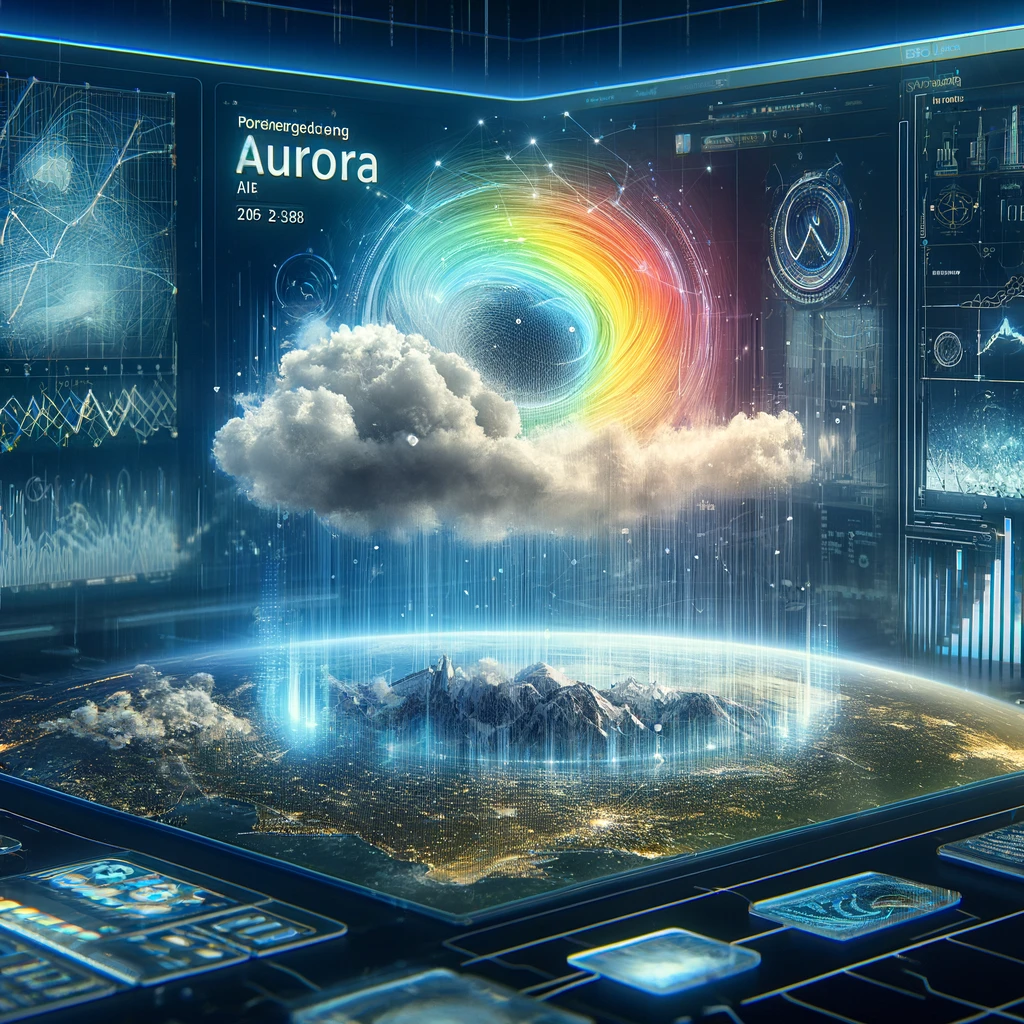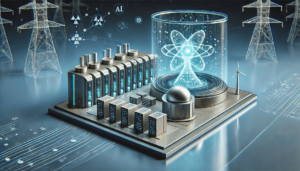Aurora: Pioneering Weather Forecasting with AI

Aurora, the AI model transforming weather forecasting, processes atmospheric data in real time, showcasing its advanced capabilities in predicting weather patterns and mitigating extreme events.
- How does Aurora improve the accuracy and efficiency of weather forecasting?
- What technological advancements make Aurora superior to traditional weather-prediction models?
- How can Aurora’s capabilities benefit various sectors in preparing for climate change challenges?
In a world increasingly vulnerable to extreme weather events, accurate weather forecasting is more critical than ever. The recent devastation caused by Storm Ciarán, which struck northwestern Europe in November 2023, underscored the limitations of current weather-prediction models. As communities faced unprecedented destruction, a pressing question emerged: How can we better anticipate and prepare for such extreme weather events? Enter Aurora, the first large-scale foundation model of the atmosphere developed by a team of researchers at Microsoft. This groundbreaking AI model promises to revolutionize weather forecasting by providing more accurate predictions and insights into atmospheric processes. In this article, we explore the development, capabilities, and potential impact of Aurora on weather forecasting and beyond.
The Need for Better Weather Forecasting
Storm Ciarán’s impact highlighted the inadequacies of even the most advanced AI weather-prediction models in capturing rapid intensification and peak wind speeds. This event served as a catalyst for the development of Aurora, a cutting-edge AI foundation model designed to address these challenges. According to a study by Charlton-Perez et al. (2024), the need for improved forecasting tools is evident, particularly in the face of climate change and the increasing frequency of extreme weather events.
Aurora’s Innovative Architecture
Aurora represents a significant leap in weather forecasting technology. It is a 1.3 billion parameter foundation model specifically designed for high-resolution forecasting of weather and atmospheric processes. Aurora employs a flexible 3D Swin Transformer with 3D Perceiver-based encoders and decoders, optimizing it to handle multiple heterogeneous datasets with varying resolutions, variables, and pressure levels.
The model undergoes a two-stage fine-tuning process: short-lead time fine-tuning of the pretrained weights and long-lead time (rollout) fine-tuning using Low Rank Adaptation (LoRA). This process ensures that Aurora can tackle a diverse range of operational forecasting scenarios with unprecedented accuracy. By training on over a million hours of diverse weather and climate simulations, Aurora develops a comprehensive understanding of atmospheric dynamics, enabling it to excel even in data-sparse regions or extreme weather scenarios.
Superior Accuracy and Efficiency
Aurora’s high spatial resolution of 0.1° (approximately 11 km at the equator) allows it to capture intricate details of atmospheric processes, providing more accurate operational forecasts than traditional numerical weather-prediction systems. Remarkably, Aurora offers a computational speed-up of approximately 5,000 times compared to the state-of-the-art Integrated Forecasting System (IFS), making it both faster and more cost-effective.
Versatility in Atmospheric Forecasting
One of Aurora’s standout features is its versatility. The model can forecast a wide range of atmospheric variables, including temperature, wind speed, air-pollution levels, and concentrations of greenhouse gases. Aurora’s architecture is designed to handle heterogeneous gold standard inputs and generate predictions at different resolutions and levels of fidelity.
For instance, Aurora has demonstrated its ability to accurately forecast air-pollution levels using data from the Copernicus Atmosphere Monitoring Service (CAMS). This task is notoriously challenging due to the complex interplay of atmospheric chemistry, weather patterns, and human activities. Aurora’s flexible encoder-decoder architecture and attention mechanisms enable it to effectively process and learn from this data, producing accurate five-day global air pollution forecasts at 0.4° spatial resolution. In tests, Aurora outperformed state-of-the-art atmospheric chemistry simulations on 74% of all targets, showcasing its adaptability and potential to tackle a wide range of environmental prediction problems.
The Importance of Diverse Training Data
Aurora’s success is largely attributed to its training on a diverse array of datasets. By incorporating data from climate simulations, reanalysis products, and operational forecasts, Aurora learns a more robust and generalizable representation of atmospheric dynamics. This diverse pretraining data corpus allows Aurora to outperform state-of-the-art numerical weather prediction models and specialized deep-learning approaches across various tasks and resolutions.
The model’s superior performance is evident when compared to other advanced AI models like GraphCast, which is pre-trained only on ERA5. Aurora’s comprehensive pretraining and fine-tuning protocols enable it to excel in downstream tasks, demonstrating significant improvements in forecasting extreme values and maintaining accuracy across different atmospheric levels.
Challenges and Future Directions
While Aurora represents a significant advancement in weather forecasting, it is not without its challenges. Legal retrieval, the process of finding appropriate authority, remains difficult due to the inherent complexity of the law. Aurora’s performance in such tasks highlights the need for continuous improvement and adaptation.
Moreover, the tendency of AI to agree with incorrect assumptions, known as sycophancy, poses unique risks in legal settings. Aurora’s development team must address these challenges to ensure that the model remains reliable and accurate in all applications.
A Paradigm Shift in Earth System Modeling
Aurora’s implications extend far beyond weather forecasting. By demonstrating the power of foundation models in the Earth sciences, Aurora paves the way for comprehensive models that encompass the entire Earth system. This advancement could democratize access to accurate weather and climate information in data-sparse regions, such as the developing world and polar regions. The potential impact on sectors like agriculture, transportation, energy harvesting, and disaster preparedness is immense, enabling communities to better adapt to the challenges posed by climate change.
As the field of AI-based environmental prediction evolves, Aurora serves as a blueprint for future research and development. The study highlights the importance of diverse pretraining data, model scaling, and flexible architectures in building powerful foundation models for the Earth sciences. With continued advancements in computational resources and data availability, foundation models like Aurora could become the backbone of operational weather and climate prediction systems, providing timely, accurate, and actionable insights to decision-makers and the public worldwide.
A Blueprint for the Future
Aurora represents a groundbreaking advancement in weather forecasting and atmospheric science. Its ability to provide accurate, high-resolution forecasts at a fraction of the computational cost of traditional systems marks a significant step forward. As Aurora continues to evolve and improve, it holds the promise of transforming our understanding of the atmosphere and enhancing our ability to predict and mitigate the impacts of extreme weather events.
The development of Aurora underscores the importance of continued investment in AI research and the potential benefits of leveraging diverse data sources and advanced machine learning techniques. By pushing the boundaries of what is possible in atmospheric science, Aurora sets the stage for a future where accurate and timely weather forecasts are accessible to all, helping to safeguard communities and enhance our resilience in the face of climate change.
For more information on Aurora and its development, read the original article on the Microsoft Research Blog.




